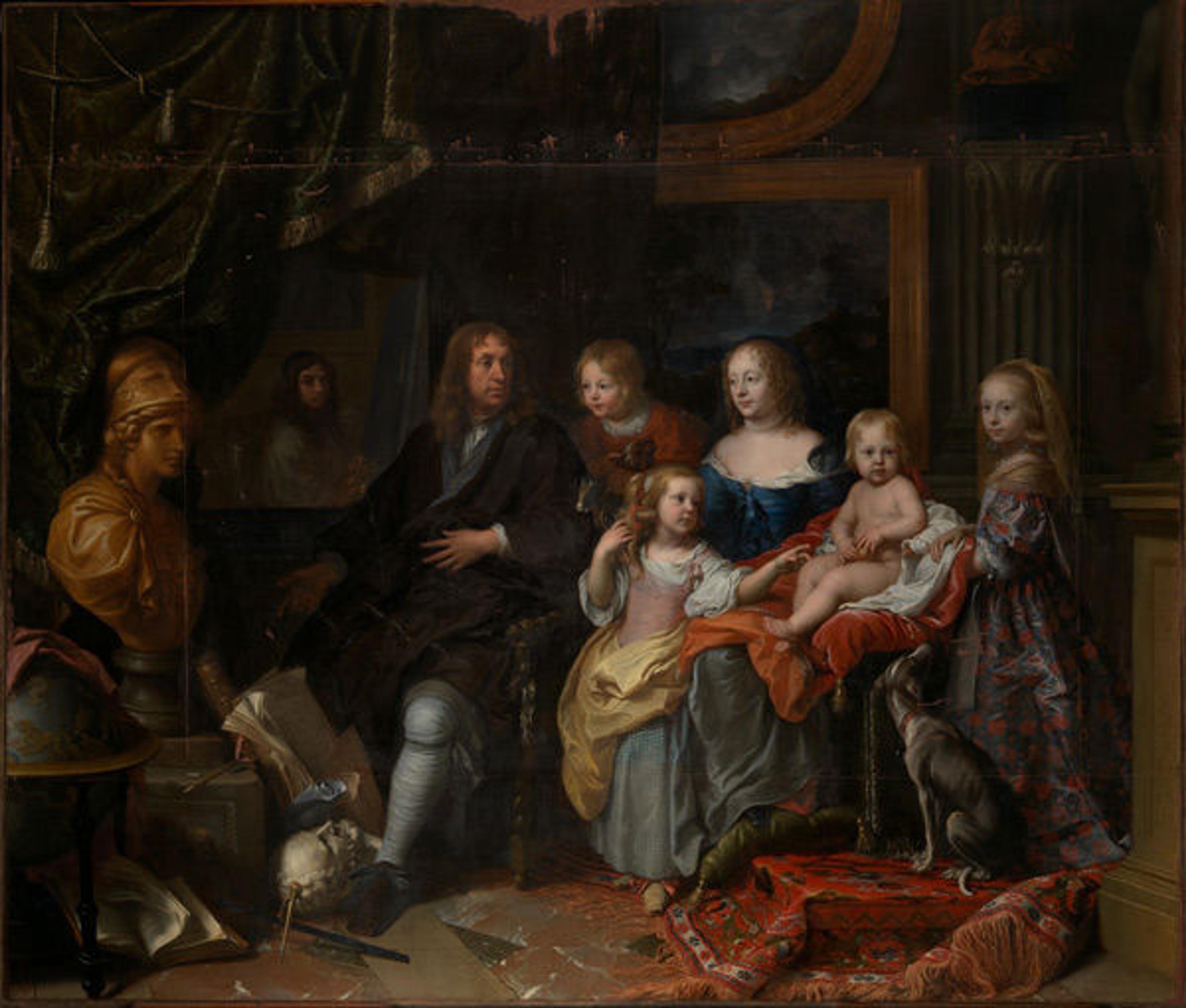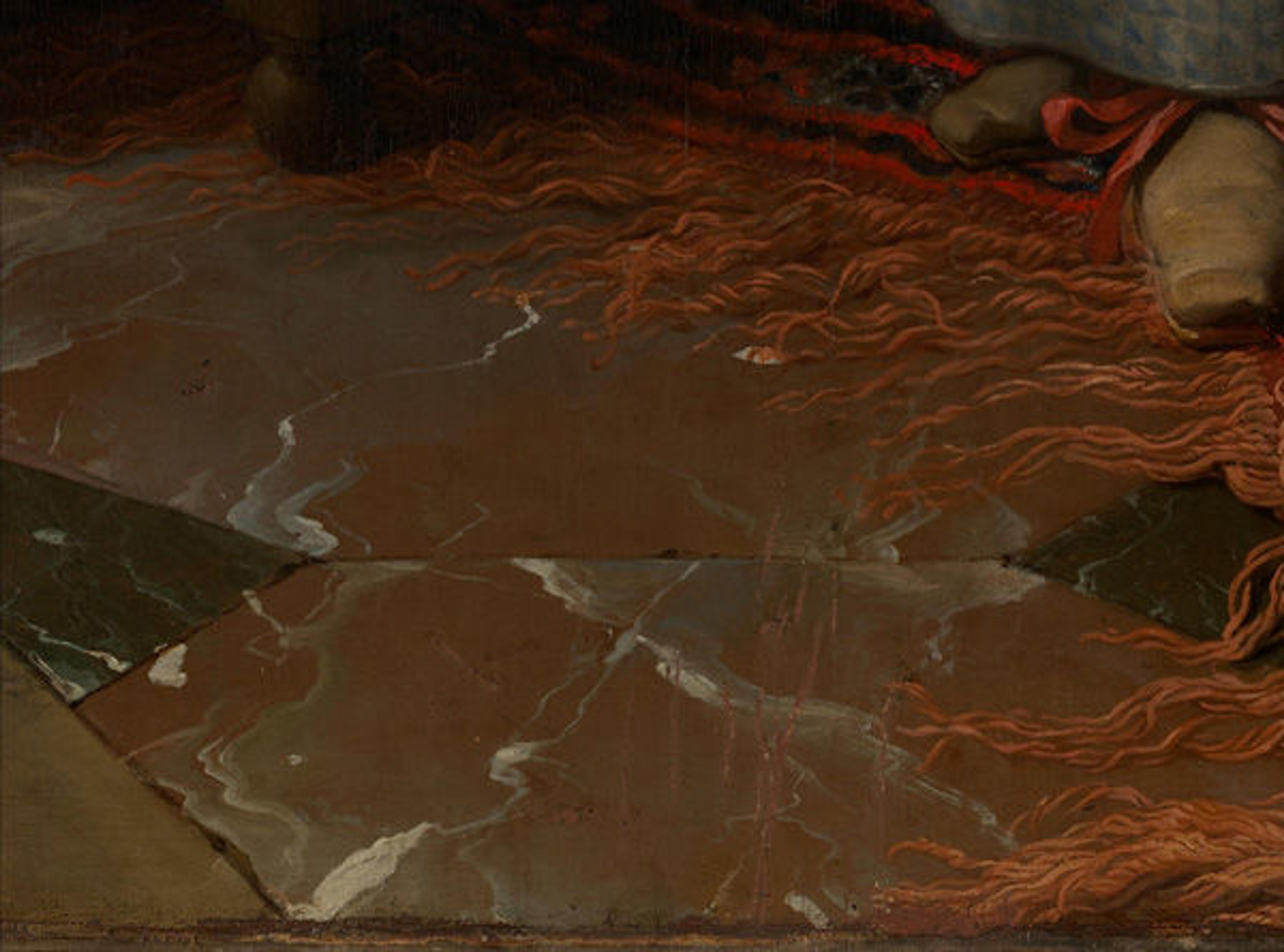Surface, Depth, and Description in Le Brun's Portrait of Everhard Jabach and His Family

Charles Le Brun (French, 1619–1690). Everhard Jabach (1618–1695) and His Family (mid-conservation), ca. 1660. Oil on canvas; 110 1/4 x 129 1/8 in. (280 x 328 cm). The Metropolitan Museum of Art, New York, Purchase, Mrs. Charles Wrightsman Gift, 2014 (2014.250)
«We sometimes imagine that no one before the twentieth century thought of a painting in terms of line and color and the play between surface and depth—that before the advent of Cubism, painting was a matter of mere description. Wrong.»
We actually find these fundamentals expressed in the earliest post-Antique treatise on painting written in 1435 by the Florentine humanist Leon Battista Alberti. The difference was that Renaissance and Baroque artists strove to create an illusionistic depth rather than the conceptual one of modern painting and had as their goal the simulation of the world around us—verisimilitude was the critical term in play. They used three principal means to achieve the effect of depth they were after: the modeling of individual forms so that they would acquire a three-dimensional appearance; the overlapping of objects within the composition; and the implementation of perspective, which was based on a theory of vision and spatial perception.
When I am asked what I look for in paintings—I mean beyond subject matter and expressive content—I find myself returning to these same qualities: the distribution and balance of colors and shapes, the play between surface and depth, and the way the artist both emulates and transforms the world of visual experience. All of these characteristics are masterfully evident in Le Brun's great painting of Everhard Jabach and his family, and thanks to Michael Gallagher's work, the painting now seems fresh and vibrant in a way that has astonished me. You see, Michael has applied the initial coat of varnish in preparation for the retouching of the various small losses. The effect is still a bit patchy, but it is now obvious that when the picture is finished, the richness of color, the play between surface and depth, and the illusionism of various details will be extraordinary.

Detail of the artist reflected in a mirror, at left, and Everhard Jabach, at right
The back wall—defined by the geometric shapes of the picture frames, the vertical fluting of the pilaster (juxtaposed with the curving forms of a partially viewed antique statue), and the contrasting, irregular shape of the magnificent, pulled-back curtain—is lit more dimly than the foreground area. (The notional light source is in front of the picture, from the upper left.) These features serve as a brilliant foil for the varied poses of the figures, with their angled heads arranged to form a rhythmic sequence. The intervals between the heads are wonderfully varied, with the wide hiatus between the heads of the members of the family and that of the statue of Minerva ingeniously filled by the head of the artist reflected in the mirror propped on a table (see my December 3 post for more on mirrors in paintings). The mirror allowed the artist to create a play between the illusionistic depth of the picture he has conjured into being with his brush and the illusion we experience daily when we gaze in a piece of silvered glass.

Detail of the carpet, which is painted with great dollops of pigment
That reflection now really registers as a mirrored image, and this, I think, underscores Le Brun's desire to assert the fictional reality of his painting and Art as something more lasting and more real than a mere mirrored image. And then there are those forms that define the stage-like foreground with their almost three-dimensional, tactile solidity. The carpet—its irregular, bunched-up shape echoing that of the curtain—is painted with great dollops of pigment. You want to thrust your fingers into the deep nap. The highlights on the fringe make this part of the painting almost as powerful in its mimetic intention as the veined marble floor, where Le Brun has introduced a marvelous simile of the effects of time by emphasizing the chips along the edges of the individual squares. What a stroke of genius to contrast the curling, woolly fringes of the carpet with the hardness of the marble pavement! Pushed up against the edge of the picture plane, these forms mark the transition between the real and fictional world. The leg of the celestial globe casts a strong diagonal shadow on the floor, and this further asserts the physical, quasi-tactile quality of the space of the picture. All of this could be seen from the outset, but Michael's work has now wonderfully brought to life the artistry and complexity of Le Brun's pictorial imagination—and his sheer mastery with the brush.

Detail of the chipped marble floor
As Alberti says in Book III of De pictura, "The function of the painter is to draw with lines and paint in colors on a surface any given bodies in such a way that, at a fixed distance…what you see represented appears to be in relief and just like those bodies."
Keith Christiansen
Keith Christiansen, John Pope-Hennessy Chairman of the Department of European Paintings, began work at the Met in 1977, and during that time he has organized numerous exhibitions ranging in subject from painting in fifteenth-century Siena, Andrea Mantegna, and the Renaissance portrait, to Giambattista Tiepolo, El Greco, Caravaggio, Ribera, and Nicolas Poussin. He has written widely on Italian painting and is the recipient of several awards. Keith has also taught at Columbia University and New York University's Institute of Fine Art. Raised in Seattle, Washington, and Concord, California, he attended the University of California campuses at Santa Cruz and Los Angeles, and received his PhD from Harvard University.